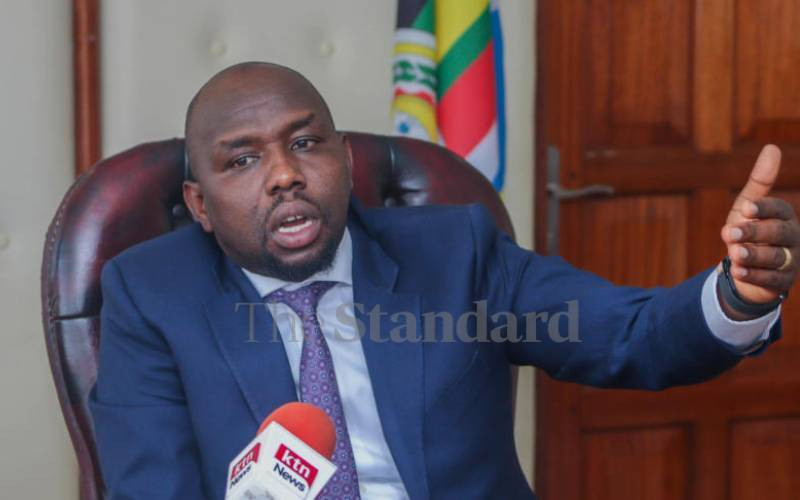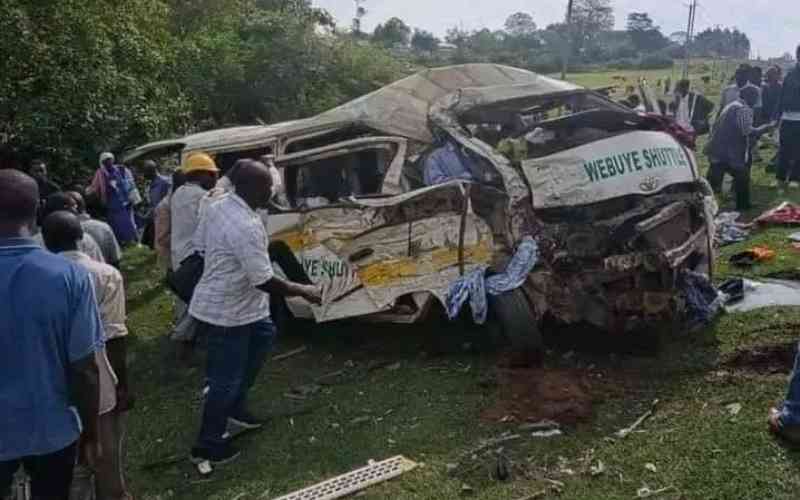Kenyan roads have become notoriously dangerous. The World Health Organisation (WHO) says in its 2013 Global Status Report on Road Safety that the annual official figure for road traffic deaths in Kenya stands at 3,000 but adds that the figure could be as high as 8,500.
Many of the accidents that kill or maim thousands are not recorded for lack of adequate reporting mechanisms. Last Saturday, three people died at the notorious Sachangwan area after a lorry rammed into a school bus belonging to St Patrick's Secondary School Iten, causing multiple other accidents. The dead were reported to have been in a public service vehicle that veered off the road after being hit by another vehicle.
Too many accidents have occurred at this place over years and it would seem there is no end in sight to this deadly menace. If we look back, it wouldn't be difficult to recall moments when whole villages were thrown into mourning because of tragedies that took place at Sachangwan.
Yet, much has been said that is often forgotten by those in authority as soon as wreckage is removed from the scene of accident.
When an aeroplane is involved in accident, the practice world over is for investigations to be done to unravel the cause. Despite road accidents carrying similar consequences, things usually revert to normal until the next accident happens to open way for the next circle of lamentations.
How many more people must die at this ill fated area before we do something to lessen the frequency of accidents?
It does not bear thinking what would have happened had the school bus ferrying students to the Mombasa music festivals rolled too. The death toll would have been higher but still, any death is one too many. Invariably, most offenders in accidents that occur at Sachangwan are trucks. The anomaly has been attributed to mechanical problems owing to poor maintenance and drivers suffering judgmental lapses due to fatigue.
Suggestions have been made on what the government should do to control some of these accidents. Some of the proposed measures include construction of special lanes for trucks. Others advocate for specific movement times for trucks. Erection of speed bumps at black spots is also one way of reducing accidents.
The importance of clear and visible roads signs cannot be over emphasised. Unfortunately, recent speed bumps erected along the Sachangwan stretch appear not to have been marked. Eye witnesses to the latest mishap claim the lorry driver was not aware of the new bumps.
That, however, is not an excuse for drivers who over speed for they must be alert to the unexpected at all times while behind the wheel.The government can no longer afford to sit back and warn drivers against over speeding while providing statics of accidents. The time for action is now.
Traffic policemen are reminded that they should be more vigilant in ensuring defective vehicles and those that flout traffic rules are kept off the road to ensure safety for road users. It will be necessary to confirm that these trucks and indeed all public service vehicles are fitted with workable speed governors as the current scenario still leaves room for mistakes.
Effort must be made to keep our roads safe and one of the imperatives is to keep heavy trucks away from busy roads used by private and public service vehicles or enforce the law that specifies their times of travel.
 The Standard Group Plc is a
multi-media organization with investments in media platforms spanning newspaper
print operations, television, radio broadcasting, digital and online services. The
Standard Group is recognized as a leading multi-media house in Kenya with a key
influence in matters of national and international interest.
The Standard Group Plc is a
multi-media organization with investments in media platforms spanning newspaper
print operations, television, radio broadcasting, digital and online services. The
Standard Group is recognized as a leading multi-media house in Kenya with a key
influence in matters of national and international interest.
 The Standard Group Plc is a
multi-media organization with investments in media platforms spanning newspaper
print operations, television, radio broadcasting, digital and online services. The
Standard Group is recognized as a leading multi-media house in Kenya with a key
influence in matters of national and international interest.
The Standard Group Plc is a
multi-media organization with investments in media platforms spanning newspaper
print operations, television, radio broadcasting, digital and online services. The
Standard Group is recognized as a leading multi-media house in Kenya with a key
influence in matters of national and international interest.








